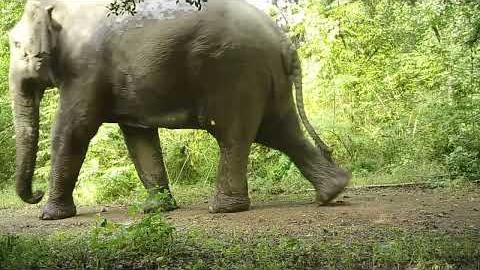About Tigers
Known worldwide for its distinctive stripes and imposing size, the tiger (Panthera tigrisem) is one of the world’s most iconic wildlife species. While tigers are ubiquitous in culture, sports and entertainment, they are much rarer in the wild and are now close to extinction, with only about 4,500 wild individuals remaining. But tiger habitat remains, giving us hope for a dramatic recovery if we rally behind tigers and protect them from poachers, human-cat conflict and habitat fragmentation.
Tigers Forever
Through our Tigers Forever Program, we are monitoring populations of tigers and their prey, supporting counter-poaching efforts to secure protected areas and connecting and protecting tiger habitats alongside our partners in India, Indonesia, Malaysia, Nepal and Thailand.
Our Goals

Recover tiger source sites.

Support a 50% increase in tiger numbers within ten years.

Create a network of functionally connected source populations.
Where We Work
Countries: Malaysia and Thailand. We also work with organizations and government entities in India, Indonesia and Nepal.
Where Do Tigers Live?
Tigers live mainly in the forests of tropical Asia, though they also roam colder climates like those in Northeast Asia. Breeding populations can still be found in 10 countries, including Thailand, Myanmar, Malaysia, Indonesia, Bhutan, Bangladesh, Nepal, India, China and Russia.
- Historic Range
- Current Range
FAQs
Is there still hope for tigers?
Yes, there is hope for tigers. Despite losing 93% of their historic range in the past two centuries, a few populations have recovered in the last decade thanks to conservation efforts. The 2022 Panthera-led IUCN Red List of Threatened Species Assessment estimated 4,500 wild tigers worldwide, compared to 3,200 in 2015. This potential increase reflects a better understanding of tiger populations, as well as the first potential climb in decades. Further, the assessment indicates that nearly 1 million km2 of potential tiger habitat remain vacant and capable of hosting recoveries in the future.
Conservation organizations have discovered and are implementing the “recipe” for successful tiger conservation: increasing protected tiger habitats, preventing poaching, and collaborating with tiger range governments and communities. However, several challenges still need to be addressed to ensure tigers' long-term survival and inclusive and collaborative conservation initiatives are key to better outcomes for tigers.
Why do tigers have stripes?
Tigers’ stripes allow them to blend into their environment and sneak up on prey, whether in tall grass, lush forests or another type of environment. Tigers’ main prey, deer, can’t see red so they appear green and black, further helping them camouflage.
What do tigers eat and how do tigers hunt?
Tigers prefer wild pigs, deer and wild cattle (including gaur, which can weigh up to 3,300 lbs!) across their habitats. They also opportunistically hunt birds, fish, reptiles and other smaller mammals like monkeys and porcupines. Tigers usually hunt during morning and evening when their prey are most active, stalking prey and then ambushing them with an explosive burst of energy.
Do tigers purr or roar?
Tigers cannot purr continually. Instead, they can roar thanks to unique modifications of the larynx and an elastic hyoid structure. To communicate amongst themselves, tigers are also known to chuff, which is a non-threatening vocalization.
Why are tigers Endangered and what is threatening them?
Poaching and habitat loss have driven the significant decline in tigers over the last century. Additionally, tigers are illegally killed for their body parts, usually sold for use in Traditional Medicine as part of the Illegal Wildlife Trade. The species is also threatened by conflict with humans and overhunting of prey species.
How many cubs do tigers have? How long do cubs stay with their mother?
Tigers usually have litters of two to five cubs. After three to five months, the cubs are weaned off their mother’s milk. By 18 to 24 months, they are fully independent. Males disperse widely, while females tend to stay closer to their mother’s territory.
What is the average lifespan of a tiger?
The average lifespan of a tiger in the wild is between 10 and 15 years.
What does Panthera do to protect tigers?
Panthera protects tigers by preventing poaching, disrupting the illegal wildlife trade and protecting the places where tigers breed. In partnership with national governments and local communities, we help train and equip anti-poaching rangers to deter and respond to poaching incidents safely and effectively. We work with local judiciary members to increase prosecutions and penalties for members of the criminal syndicates who are devastating tiger habitats and populations. We are also increasing the size and connectivity of crucial tiger habitats by advocating for expanded or new protected areas. Finally, supporting sustainable livelihoods for local communities helps reduce their dependence on unsustainable resource extraction (like prey hunting and wood harvesting) from tiger habitats.
How can I help tigers?
The top ways to support tigers are to donate to Panthera, learn more about the issues facing tigers (including illegal wildlife trade, biodiversity loss and poaching) and support government representatives that protect nature and endangered species.






